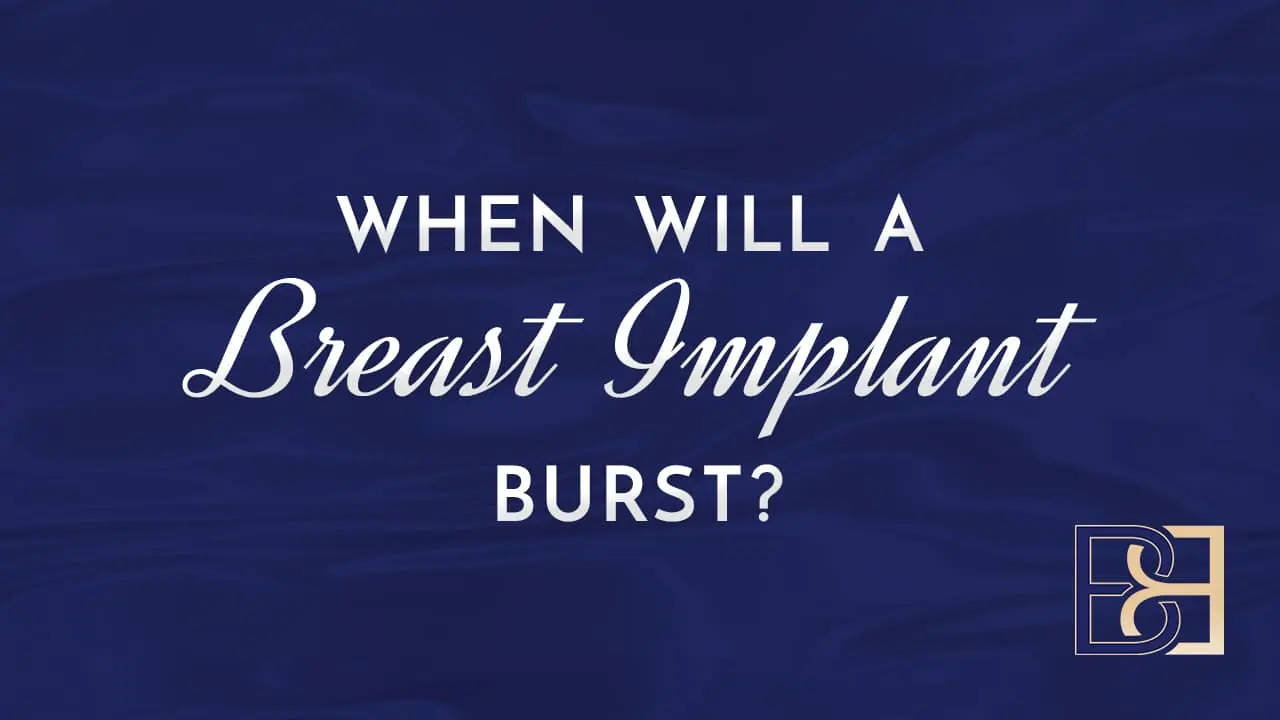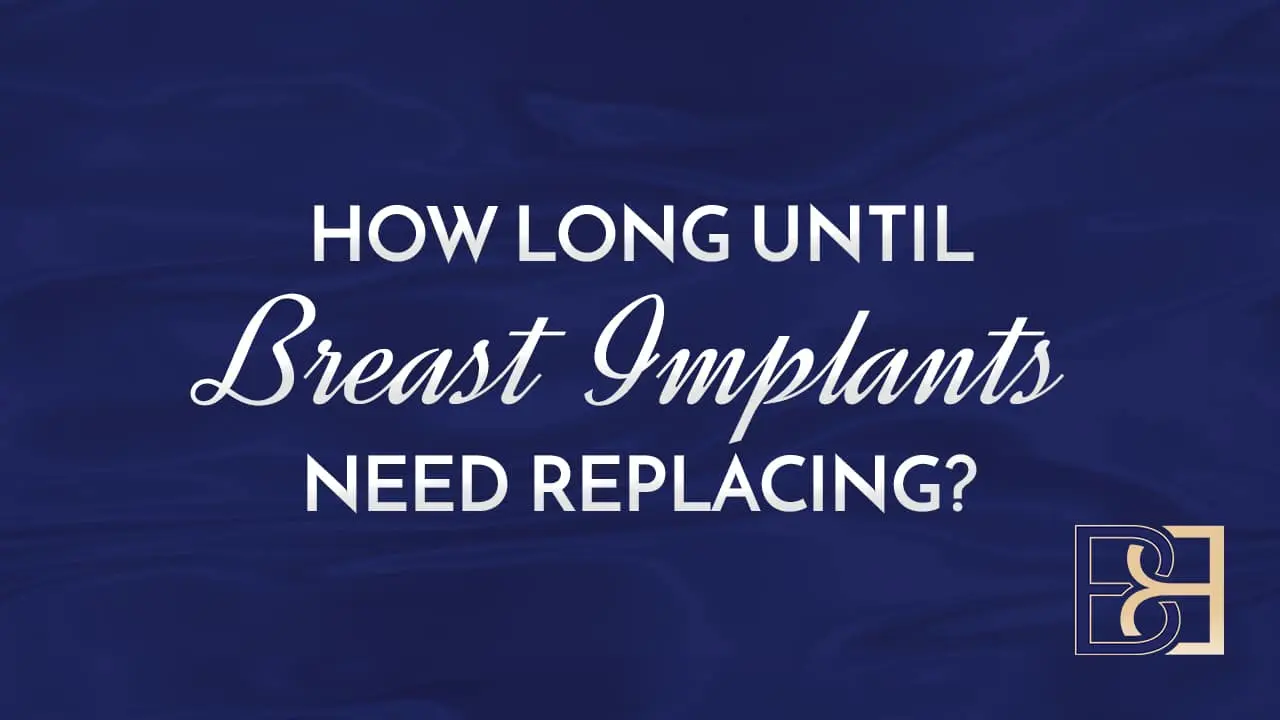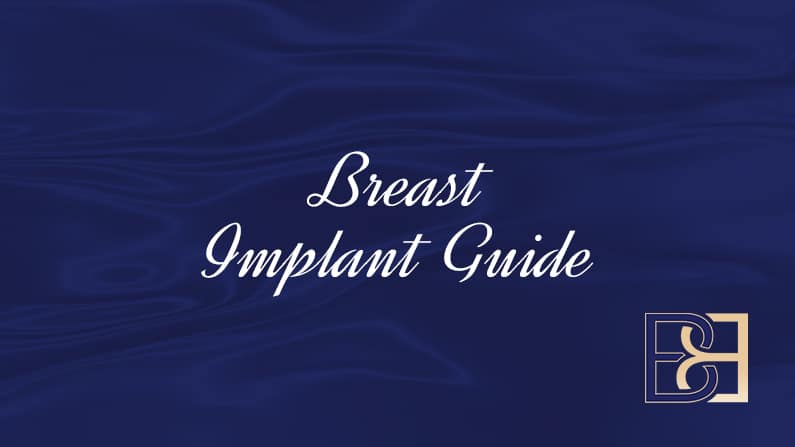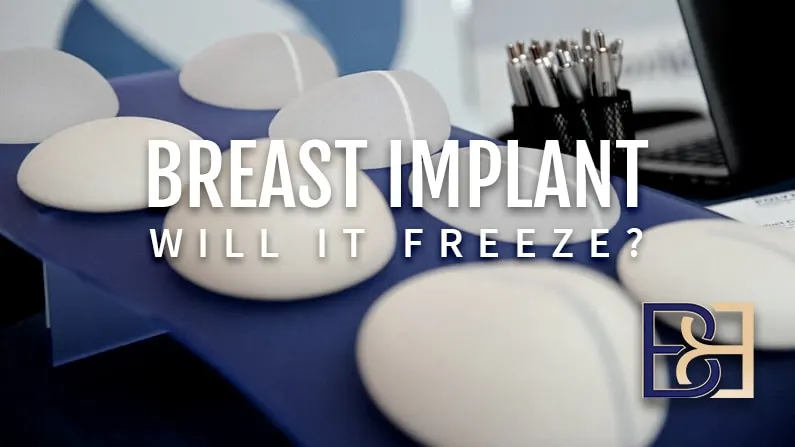If you’re considering implants or have had them for years, you are probably wondering when to replace breast implants. The questions may be spinning in your head. Do I have to replace implants every 10 years? I don’t want another surgery…
Dr. Beldholm, FRACS is here to set the record straight on breast implant replacement. Continue reading to find out exactly when and how your breast implants should be replaced.
You’ll gain peace of mind knowing the answer once and for all.
Book your appointment online now
Breast implants are devices
When you get breast augmentation surgery, it is important to know that breast implants are not lifetime devices. Like any appliance, a breast implant is a device. That means it has a limited lifespan.
Equally important is the fact that implants don’t spontaneously combust when they reach a certain age.
Just like a car, your mileage may vary. You and your neighbor may both drive a Volkswagen, but one car may get 200,000 km while the other gets 275,000 km until it’s time to get a replacement. Both cars were made in the same factory in the same year. However, one simply lasts longer than the other for a variety of reasons.
Breast implant problems increase over time
As the years go by, breast implant complications may come up. That doesn’t mean there is anything wrong with the implant to start with. It just means the functionality will eventually degrade over time. This is ** normal, and something you should expect.
There are, however, some complications that may result over time. Your needs may also change.
The most common breast implant complications due to aging breast implants are:
- Capsular contracture (aka capsular contraction)
- Implant rupture
- Implant moved to the side or implant bottomed out
Then there are other considerations:
- Breast implant **(this is normal and occurs with both natural and implant breasts)
- You may also become unhappy with implant size as the years pass
Capsular contracture
Capsular contracture is hardness that happens around the implant. This can eventually cause pain in some patients depending on the severity. For some women, the condition can be painless or mild. In late stage capsular contracture, the pain can be moderate to very painful.
Signs of capsular contracture may include hardening breasts after implants, implant shape change, pain, and/or a tight sensation in the breasts. Distorted implants that ride high on the chest are another symptom; However, this should not be confused with high-riding implants right after breast augmentation, which is normal. (The breasts need time to settle into their final shape after the initial surgery.)
Capsular contracture symptoms usually progress with time, ranging from months to years. According to Dr Beldholm, there is about a 20-30 percent chance of capsular contracture in the first 10 years after the breast implant procedure.
Implant rupture (leaking implants)
A ruptured implant is uncommon, but it can still happen — especially in older implants as the quality of the outer shell degrades over time.
Ruptured silicone implant
Silicone implant leaks happen slowly. You most likely won’t even notice anything has happened for years. This is known as a silent implant rupture, or simply “silent rupture”. The silicone gel leaks slowly. You may not notice a decrease in size at all.
Ruptured saline implant
Saline implant rupture can also happen. In this case, the sterile saline leaks out **, usually in a matter of days. This can be alarming, but it is not a true medical emergency since you are not in immediate danger. However, this is a good time to see your surgeon to find out what options are available.
Having one deflated breast is obviously a cause for alarm from a cosmetic standpoint. Most women choose to get the saline implant removed and replaced as soon as possible for this reason.
Detecting implant rupture
Getting a regular MRI for breast implants (about every two years) can detect implants rupture. When you get implants, it’s important to know that an MRI is something you really need to do. MRI is considered the gold standard for detecting implant leaking. Compared to an ultrasound, an MRI is 94% more accurate at detecting rupture, while ultrasound has an accuracy of 72%.
Implants can rupture for many reasons. One reason could be a mammogram. It’s worth mentioning that getting a mammogram can sometimes cause implant rupture in rare cases. Mammograms are a great tool to screen for breast cancer, whether the patient has implants or not. This is especially true for patients that have a history of breast cancer in the family.
Since we are on the topic of cancer, let’s talk a bit about breast cancer. Modern breast implants do not cause cancer. Even the FDA confirms this is true.
If you are having a mammogram this year, schedule your bi-annual MRI after the mammogram.
Ruptured implant removal
Whether you have saline or silicone breast implants, it is wise to schedule breast implant removal and replacement as soon as possible after rupture. However, unless it is really bothering you, you can technically wait months or even years to ** it. Just bear in mind it can increase the risk of hardening of the breast tissue, in the case of silicone implants, the longer you have them in after implant rupture occurs.
Download our guide: “How to Choose a Breast Implant”
Implant shifted out of place
An implant can bottom out, whether due to age or laxity in the cavity it was placed into, among other reasons. Older implants may also shift out of place or move to the side over the course of time. While this may occur as early as the first year of surgery or much later in life, it can be easily corrected with breast revision surgery or implant replacement surgery.
If breast implants bottoming out happens early on, which is unlikely, Doctor Bernard may be able to perform a ** procedure that involves moving the breast implant upward, then stitching the incision so the breast sits in the desired position.
** breast implants
Both natural breasts and ** breasts will ** with age. It’s just a fact of life. Typically, the larger the breast, the more ** is expected. As skin ages, it loses elasticity. This gives the breasts a drooping appearance as gravity takes a toll.
The upper pole of the breast also loses fullness with age. While breast implants won’t lose fullness in the upper pole like natural breast tissue, the whole breast may ** downward. The result is the same: Breasts that appear to lose volume and fullness.
Breast implant ** is nothing to worry about from a medical standpoint. However, if you wish to get a breast lift, that is one of Dr Bernard’s specialities. He can help correct ** whether you have natural breasts or older breast implants. If the implants are older (as is usually the case by the time your breasts begin to ** ), it is advisable to get the implants replaced during the surgery.
It is also possible in some cases to use a larger implant to restore fullness to sagging breasts. For severe **, a breast lift is a better option.
Dissatisfied with implant size
In the course of your lifetime, your idea of what the ‘** breasts’ look like may change. Likewise, beauty trends come and go. In the 1980s and 1990s, the thinking was ‘the bigger, the better’ when it came to breast implants. These days, subtle B-cup breast implants are one of the most requested sizes.
Trends come and go. What usually stays the same is the width of your chest wall when you reach adulthood. Doctor Bernard’s goal is to help you choose breast implants that will make you happy and look proportionally correct on your frame.
You may start out being thrilled with a D-cup breast implant. By the time you reach your 40s, perhaps you will decide a C cup or B cup would look better, or vice versa. It’s normal for your preferences to change with age.
Getting bigger implants in the future
If that happens, you can get a breast implant replacement to change their size. In Doctor Bernard’s experience, patients sometimes wish they had gone a bit larger. It is also easier to get a larger implant placed when you are older because the skin is more lax.
Further, if you had small breasts to begin with, then had small implants placed in your 20s or early 30s, the skin was probably quite tight at that time. Now that the implant cavity has already been created, it is easier to switch to a larger implant.
Getting smaller implants in the future
Downsizing from large implants to small ones is also possible. Ideally, you don’t want to make a dramatic reduction in size because the implant pocket was made to fit a larger implant. Still, it is possible to go smaller in many cases. There just may be some trade-offs, such as loss of fullness due to skin laxity and implant pocket size.
Book your appointment online now
Replacing breast implants shouldn’t come as a surprise
There are many reasons that you may need to get implants replaced in the future. Yet there is no set time frame. You will not wake up on your 10-year breast augmentation anniversary and suddenly need new implants. It all depends on what type of problems arise, if any, over time.
It is rare to have an “emergency” situation suddenly pop up years later that requires immediate breast implant removal. Usually, you will have some time to decide how and when you would like to proceed with breast implant replacement surgery.
For example, you may notice the breast hardening gradually over time. Capsular contracture can take months or years to develop in some patients. If capsular contracture is causing painful breasts after implant surgery or the breasts change shape and you are unhappy with them, the implants can be removed and, in most cases, replaced with new ones.
Even a slow leak from a silicone implant can take years to become noticeable. A leaking implant is not immediately dangerous since silicone is not toxic; However, leaking may contribute to capsular contracture and other cosmetic concerns.
The point is, you will usually have a bit of time to ** the problem. Dr Beldholm recommends ** breast implant leaking and other concerns early since these problems will only worsen with time.
Do you have to replace breast implants every 10 years?
The answer is No! There is no ** number. As mentioned earlier, breast implants don’t simply disintegrate or break down once they hit the 10-year mark. It is possible to get many years of life out of breast implants.
Many patients think they should replace breast implants every 10 years no matter what. This is not the case. Some women get 10 years out of breast implants, while others get 15, 20, 30 or even 40 years (in rare cases).
The reason you hear about the “10 year rule” is because, statistically speaking, there is a reasonable chance that one of the problems mentioned above will become an issue within ten years, thus requiring replacement.
Forty years would be quite rare, but it has been known to happen. Naturally, ** would be a concern by this point. But, if it doesn’t bother you and there are no other problems to speak of, there is no reason to get them replaced.
Breast implant replacement summary
If your breast implants are not bothering you and there is nothing medically wrong, there is absolutely no need to get them replaced. If an MRI shows the implant has not ruptured, if they have not shifted out of place, if there is no discomfort from capsular contracture, and you are happy with the size, you don’t need to replace breast implants. Only when a problem arises or you want to change size or ** ** should you talk to your surgeon about a replacement.




